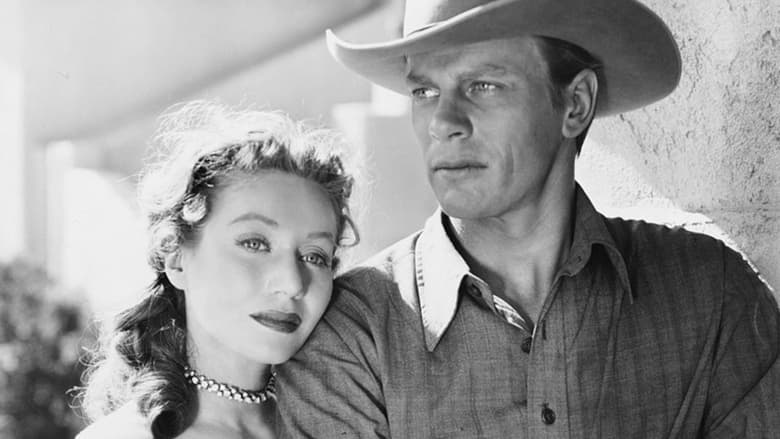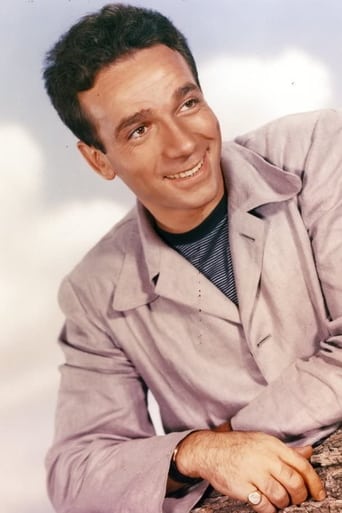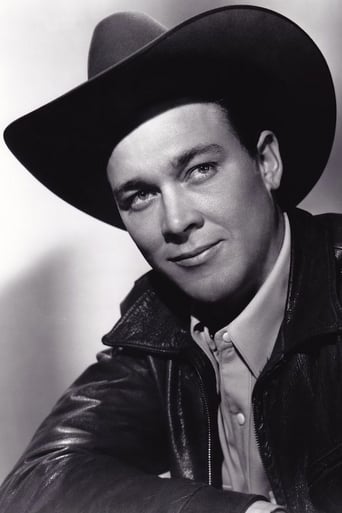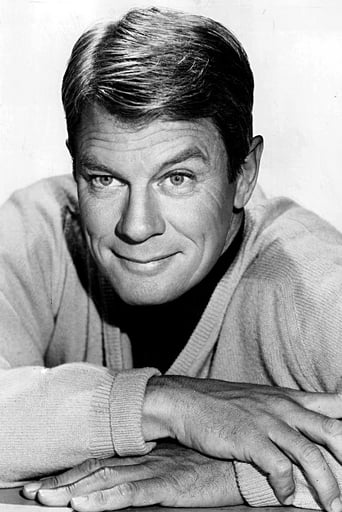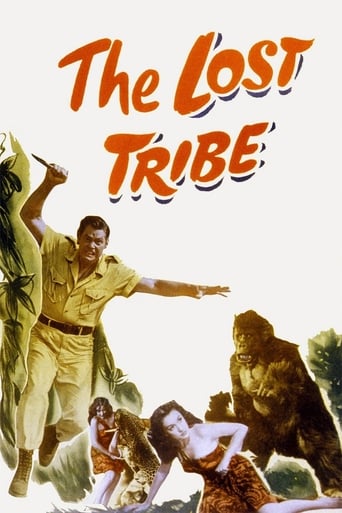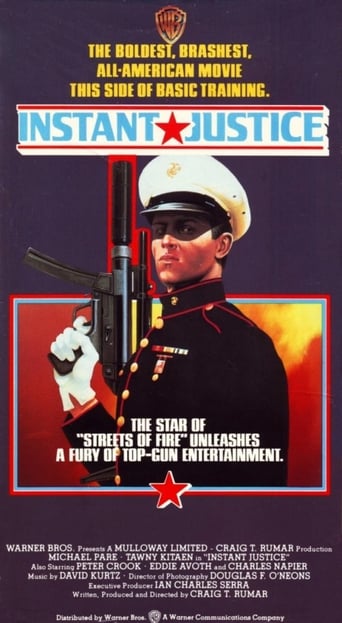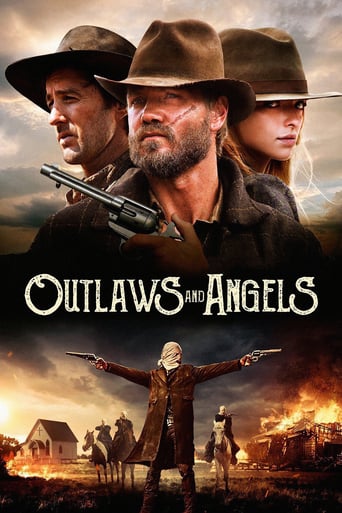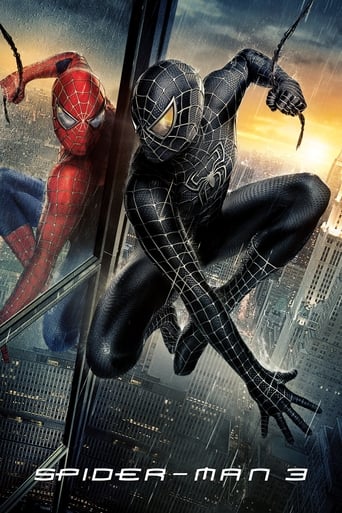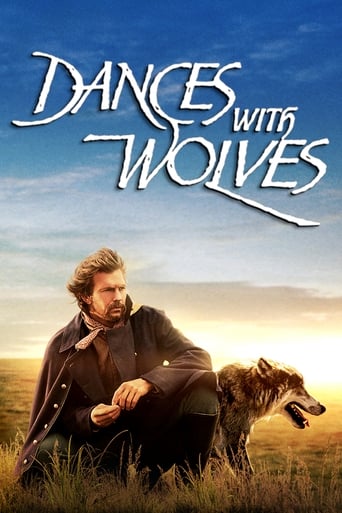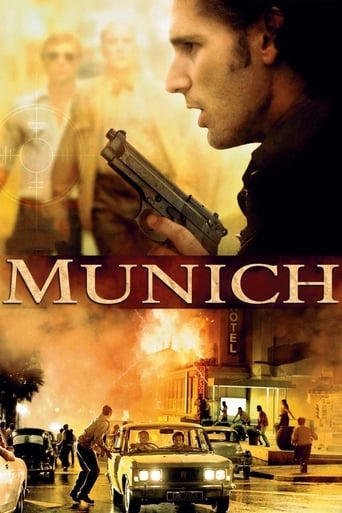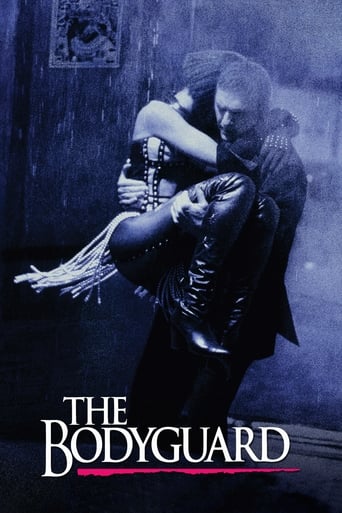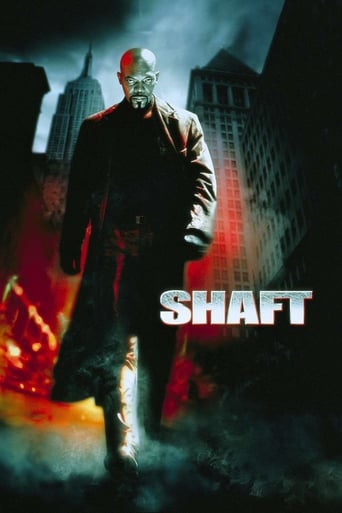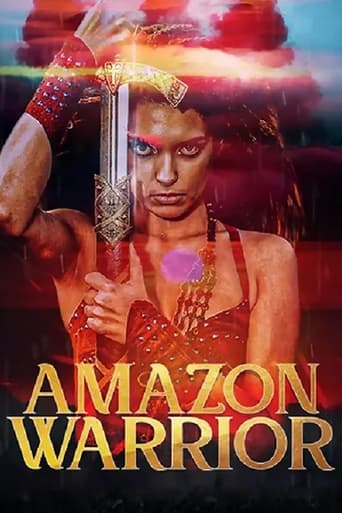Fort Defiance (1951)
It's just after the Civil War and Ben Shelby arrives looking for Johnny Tallon whom he plans to kill. Shelby was the only survivor of a battle due to the cowardice of Tallon. Thinking Tallon dead, another man who lost a brother at the same battle arrives to kill Tallon's blind brother. Tallon arrives to find Shelby and his brother fleeing. Then they are attacked by Indians and Shelby and Tallon must now fight together postponing the inevitable showdown.
Watch Trailer
Cast


Similar titles
Reviews
Admirable film.
Absolutely brilliant
A film with more than the usual spoiler issues. Talking about it in any detail feels akin to handing you a gift-wrapped present and saying, "I hope you like it -- It's a thriller about a diabolical secret experiment."
The story, direction, characters, and writing/dialogue is akin to taking a tranquilizer shot to the neck, but everything else was so well done.
I like westerns that starred Ben Johnson as a relatively young man. "Wagon Master" is a well known example. I came across this obscure film, released about the same time. In it, Ben plays Ben(Shelby, that is): an ex-Union soldier, who rides to the Tallon ranch in AZ, hoping to kill Johnny Tallon, whom he blames for his brother's death in battle, due to Johnny's said cowardice. The problem is, according to Ned, Johnny's blind brother, and his Uncle Charlie, Johnny is already dead, executed for bank robberies. This is the gossip in nearby Fort Defiance. Dave Parker, who owns a neighboring spread, also comes to kill Johnny, because his 2 brothers were killed in that same incident. No Johnny, so Parker decides to kill Ned instead. Ben doesn't think this is right, so we have a shootout, with Uncle Charlie, rather than Ned, a victim. Ben suggests that he and Ned form a partnership at the ranch. Before this, some Navajos showed up, saying they would take all the Tallon cattle. The Tallons + Ben didn't put up a fight. The Navajos were angry because the US government said thy had to move to a reservation.Eventually, Johnny shows up, to everyone's amazement, with $5000. he stole from a bank. He wants to use some of this money to get Ned to an eye doctor in San Francisco. But , Ned doesn't want to go. He wants to stay with Ben and the ranch....I will stop here, and let you see the film. There's a good amount of action, with several hostile encounters with Indians, as well with Parker and his bunch. There are several fist fights in the open, and a de facto suicide. Dane Clark, as Johnny, has a decided cocky attitude most of the time, which seems to be largely based on his very quick draw and accurate shooting. Peter Graves ably plays Ned Tallon, while white haired, bewhiskered, George Cleveland plays Uncle Charlie. Craig Woods plays Dave Parker, while Tracey Roberts plays Julie: Ned's surprising romantic interest.When Navajos attack a stagecoach, the horses are decoupled from the stage, which is used as a primitive barricade. The Indians are sitting ducks for a good rifle shooter as they circle around in daylight. They should have been able to kill all the defenders, but don't, before a cavalry arrives to shoo them away. They could have killed the horses or run off with them, thus disabling the coach.In one segment, the guys are complaining they can't get out the side of this long canyon. Yet, I saw several places where there was no canyon wall, and they should have been able to get out.I have to wonder about the scriptwriter's knowledge of geography, as the stage driver claims that San Francisco is only a day's travel from Navajoland!I have to wonder about Johnny's last act. Seems he was depressed over Ned's loyalty to Ben as opposed to him.This was one of the last films shot in 2-color Cinecolor: a cheaper alternative to 3-strip Technicolor... Shooting took place in parts of NM, southern Utah, and CA. See it at Youtube
'Ft. Defiance' is a B-movie western that in terms of story is quite a cut above the typical Saturday matinée fare. But, this is a description of the Cinecolor process it was shot in.3-strip Technicolor was the first technically viable, full color film process commercially available to the U.S. film industry. Although technically elaborate and expensive, for about a 15 year period (ca. 1935-50) it was also the only full color process available (Kodachrome, a reversal process yielding a positive image from the camera stock, was not regarded as suitable for studio film production).During Technicolor's reign there were a number of alternative low-budget color film processes based on the 2-color principle of color reproduction. Although 3 primary colors are required to obtain a full color gamut, a surprisingly natural-looking color image can be achieved by using only 2 primary colors, basically, a warm primary and a cool primary.Instead of dividing the spectrum into 3 bands (red, green, blue), it is split into 2 regions, representing the warm colors (red, orange, yellow) and the cool colors (green, blue, violet). In the photography, red and green color separation filters are used to obtain the 2 primary color images. Because of the technical complexity of full 3-color requirements, the first successful color motion picture processes (Kinemacolor and others) from the 1910's onward, were 2- color processes. Technicolor started out as a 2-color process itself.As with other 2-color processes (Trucolor being its main competitor) the Cinecolor process used Mitchell cameras adapted for bi-pack filming where 2 rolls of film are run through the camera simultaneously. The camera's magazines had 4 chambers, 2 feed and 2 take-up. Each roll of black & white film captured one of the 2 'primary' images.A Cinecolor film print contained 2 primary color images, a reddish-orange and a cyan, printed on opposite sides of the film base. In making splices, the projectionist had to scrape emulsion off BOTH sides of the film so the cement could form a proper bond. Focus was achieved by focusing at the center of the film base as a compromise (instead of on the emulsion).When Kodak and other companies introduced single-strip negative-positive color film systems around 1950 -- which meant that standard production cameras could be used for full- color filming without special adaptations or apparatus -- the raison d'etre for 2-color systems was eliminated, with 'Ft. Defiance' being among the last of its kind. 3-strip Technicolor itself survived only a few more years as a production process, although the lab continued providing imbibition film prints to the industry for more than a decade afterwards.Like other 2-color processes, Cinecolor suffered from a limited palette, where bright greens, yellows, and purples were not achievable. Most other colors could be represented with fairly reasonable approximations. It also suffered from a bit of variability in color densities. Nevertheless, it was the most natural looking of all the 2-color processes.Considering its 2-color limitations, what's remarkable about Cinecolor is how natural-looking it could be.Some other 2-color Cinecolor titles are: Black Gold (1947) Albuquerque (1948) Strawberry Roan (1948) Flight to Mars (1951) Flat Top (1952) .
The first half is a fine slice of emotional clarity, that stubborn homestead squatting like a tiny island on an ocean of redrock. The movie itself turns on Peter Graves's sightless Ned. If he's not likably appealing, then the plot doesn't work. But fortunately Graves hits the right notes without being maudlin, so we understand why others would sacrifice to help him. And when Ben (Johnson) finally turns around to help, we know there's more to family than blood kin.I wish the second half were as streamlined and inventive. But instead, it falls back on a series of clichés. What purpose, for example, is that gunning down of Parker's men except to show how fast Johnny (Clark) is. Then there's the badly clichéd Indian attack. Sure, it's panoramic and I assume that was the real purpose. However, the attack is unimaginatively staged as though the circling Redmen have no other desire than to give the Whites some live target practice. It's like they have no military sense at all. And instead of the stereotypical good- hearted hooker, why not pair the sightless Ned with a homely girl. For glamour obsessed Hollywood that would have been a real departure. In a lesser Western, such shopworn episodes are expected. But for a movie that starts off so well, these are clichés pulling events down to the merely routine.Nonetheless, the acting is first-rate, and I especially like George Cleveland's grizzled old Uncle Charlie. The chemistry between Ned and Ben and him is simply superb, and when he collapses in the doorway, there's a genuine sense of loss unusual for any Western. Then too, was there ever a better cowboy than the under-stated Ben Johnson with his authentic western twang. His gradual reconciliation with Johnny is both compelling and believable. I'm only sorry that this story of family parts finally fitting together just misses being a real sleeper.
Nice guy, Ned Tallon, now blind, is waiting for older brother, Johnny, to come home from the war and help get the ranch back on its feet. A newly arrived stranger, Ben Shelby, reports that Johnny deserted his outfit, costing many men their lives, then became a bank robber and was killed. When the desertion story gets out, relatives of several men who died want brother Ned buried, too. Ben steps in to save Ned by helping him skedaddle to Navajo territory -- but the Navajo have just been told that its Reservation Time, and they're none to pleased. ...now guess who shows up!Pretty good yarn. Fair amount of action. Rugged Arizona scenery. A good Ben Johnson role. Interesting to see Peter Graves in one of his earliest films.


